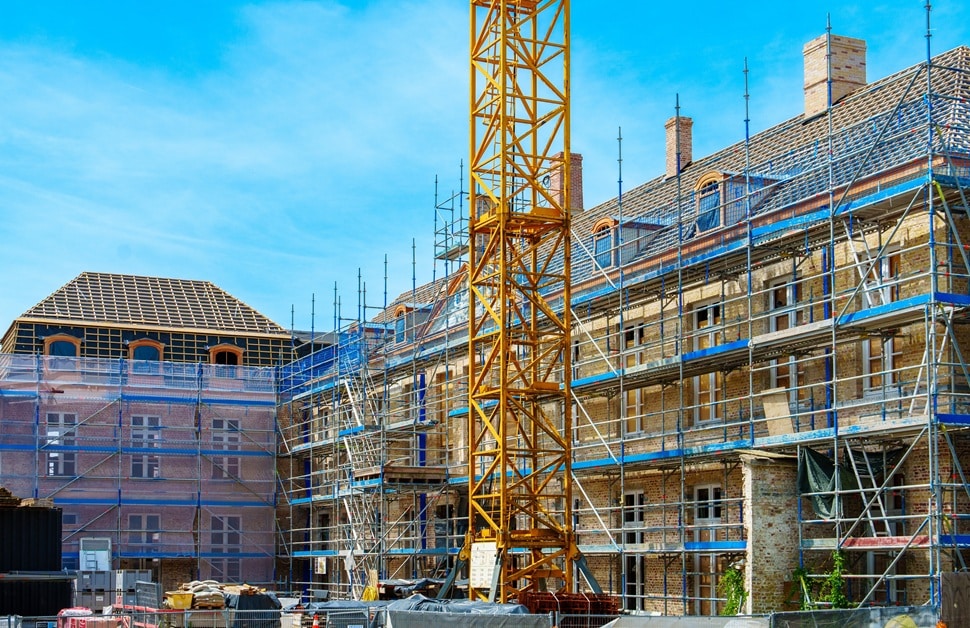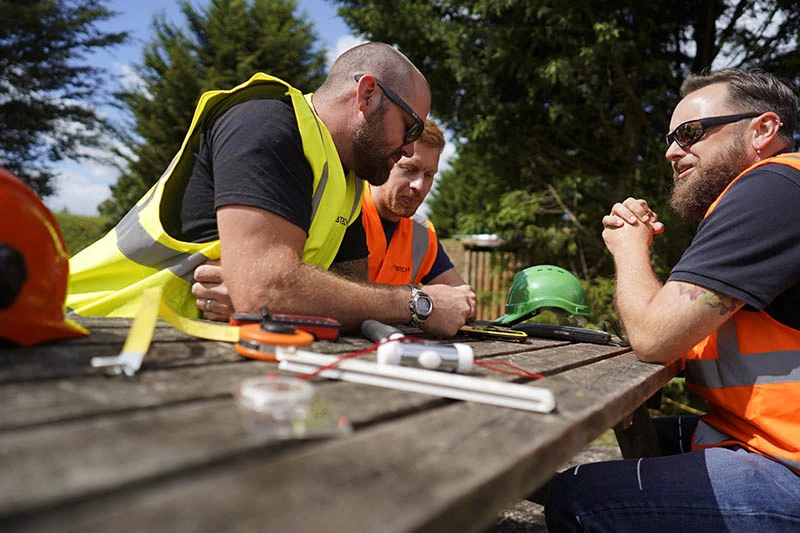
Heritage Impact Assessments and Statements
When your proposed development affects a location with historical value, you may be asked for a heritage impact assessment (HIA) or heritage impact statement (HIS) to partner the application for planning permission.
For a lot of clients, it can come as a surprise to be asked for an HIA or HIS, not helped by how both terms have been known to be used interchangeably. In reality, however, both the assessment and statement are two parts of the same process.
Documents such as these are required to ensure that decision makers can see how your project has considered historic features, such as conservation areas, listed buildings and even World Heritage Sites (WHS).
Between small flat renovation jobs to much larger projects involving housing or infrastructure schemes, the team at Arbtech can help guide you through the evaluation of heritage impact, giving you everything you need to get planning consent.
What is a Heritage Impact Assessment?
Also sometimes known as a historic building impact assessment, a heritage impact assessment (HIA) is a structured study that evaluates the potential impact of your proposed works on surrounding heritage features. It involves identifying the relevant heritage asset, assessing its significance, and determining how the proposed changes could affect it.
The HIA is especially important when a development overlaps with non-designated or sensitive sites, and it is often a part of planning applications that involve conservation areas, locally listed buildings and other historic settings.
Throughout the assessment, a heritage impact consultant will make sure that the planning project follows both national and local policies from relevant organisations such as Historic England.
What is a Heritage Impact Statement?
Also sometimes known as a historic building impact statement, a heritage impact statement (HIS) is a document that will be submitted to the local planning authority to support applications for planning permission after a heritage impact assessment has been completed.
It sets out the findings from the prior assessment in a clear way, giving planners an understanding of each historic asset and the effect of any minor changes or larger interventions.
The main role of a HIS is to demonstrate to the local authority that the development scheme has considered heritage properly, giving assurances that steps were taken to comply with the relevant planning requirements.
When Would You Need a Heritage Impact Assessment?
In a lot of situations, an assessment and a corresponding statement will be asked for to help with listed building consent applications.
Not only that, but it could also be the case that a local authority asks for one in other particular circumstances, such as when a development affects non-designated sites or sits close to protected settings like World Heritage Sites (WHS).
Statements of heritage impact can also be essential for larger projects where infrastructure or a house expansion can alter the character of an area, or in smaller projects that affect the fabric of a listed building.
Whatever the scale of the development, an HIA and HIS can be fundamental in the planning process, as they ensure that planning applications are compliant and reduce the risk of refusal.
Methodology for Heritage Impact Assessments and Statements
For dealing with heritage impact correctly, the assessment and statement make up a two-part process, starting with the assessment for researching, visiting the site and analysing relevant features, before moving on to the statement for creating a written report to submit to the local authority.
Step-by-Step Process
To explain what an assessment and statement involve, we’ve detailed each step below:
Heritage Impact Assessment (HIA)
- Gather Background Information
Reviewing existing guidance, planning policies and any available records from sources such as Historic England, and checking for both designated and non-designated heritage assets in the area.
- Site Visit and Analysis
Conducting a visit to the site to understand the character, setting and significance of the historic asset.
- Assessment of Significance
Determining why the heritage asset is important, whether it’s due to architectural quality, historical development or contribution to the historical environment.
- Assessment of Impact
Analysing how the proposed works could affect the significance of the asset, its setting or its relation to the wider area.
- Recommendations and Mitigation
Suggesting ways to avoid or reduce the impact wherever harm is identified.
Heritage Impact Statement (HIS)
- Preparation of the Statement
Writing up a professional heritage statement based on the findings from the assessment, forming the basis of the document that will be submitted alongside planning applications.
- Adapting to Specific Circumstances
Altering the statement to reflect the proposed changes caused by the project’s plans and the development site’s specific context, giving decision makers useful information for balancing sustainable development and heritage protection.
- Submission with the Planning Application
Sending across the completed statement as a heritage impact assessment report to the planning department of the local council, with all evidence needed to justify the scheme included.
- Advice on Potential Next Steps
Offering the option to help with responding to feedback, dealing with questions or refining the design in order to get the planning proposal approved by the planning officer.

Get Heritage Impact Assessment and Statement Guidance
If you haven’t had to deal with heritage policies for a development before, the conditions and jargon could feel overwhelming. A heritage impact assessment and statement does, however, make the process much simpler. For instance, it shows how your planning proposal fits with conservation principles and gives the local planning authority the confidence that your planning application has been properly considered.
At any point that you’re dealing with heritage assets like a listed building, a site within a conservation area or something on a far larger scale, Arbtech can guide you through every stage. We will ensure that your development plans align with the National Planning Policy Framework (NPPF) and existing heritage guidance, helping to reduce risks and move forward with credibility.
What Do Heritage Impact Consultants Do?
The consultants in our team are vital because they combine knowledge of planning policy with expertise in the workings of the historic environment.
A heritage consultant is able to carry out site visits, undertake research, produce clear and professional reports, and advise on reducing harm and demonstrating positive impacts in your development.
In essence, the consultant instructed to work on your site will act as the link between your design team and the planning system, providing clarity and reassurance every step of the way along your project.
How Much Does a Heritage Impact Assessment and Statement Cost?
Working out the heritage statement cost is different every time because each project has different specifications. Not only that, but if more time and consultants are needed, the price will likely differ from straightforward applications based on minor changes to a more detailed assessment based on larger developments.
When we put together a quote for a client, we take into account the type and number of heritage assets involved, the size of the development and the extent of the proposed works, and whether additional supporting documents will be needed. For an accurate quote on your development site, the best thing to do would be to reach out to our team.
Why is Arbtech the Right Option to Help?
Following years of catering to the needs of developers all over the country, our specialists are able to conduct a heritage assessment and create a heritage statement that fits your particular circumstances, falls within existing conservation principles, and works with heritage assets, a present conservation area or listed building consent affecting your development plans.
Send your details to the team at Arbtech by filling out an online form, emailing us or calling us, and from there, we can create a free quote for you to look over. As long as you give us all the useful information we need about your development site and planning project, we should be able to assemble an accurate quote for addressing heritage impact.


